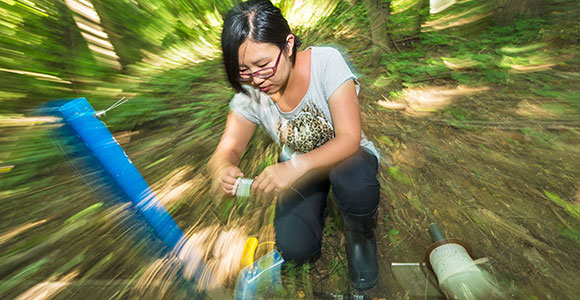Science Questions – What are the Dynamics and Controls of Subsurface Flow and Transport?
Much of the pollution in the landscape moves in the subsurface. The timing and location of pollution transport is driven by the groundwater dynamics. Groundwater levels and chemical characteristics are monitored at numerous locations within the HOAL.
A number of geophysical surveys are being conducted to improve the delineation of hydrogeological heterogeneities and processes in the subsurface. The techniques include ground penetrating radar, induced polarization and low-induction number electromagnetic induction methods. The information on the subsurface so obtained is combined with numerical flow and transport models.
To understand the stream-aquifer interactions several tracer tests were performed. These tests allowed the estimation of stream bank fluxes. Infrared cameras are used to identify hotspots of groundwater recharge into the stream. Mass balances over sections of the stream are used to determine the role of near-stream riparian trees on the daily fluctuations of the stream flow during low flow conditions.




